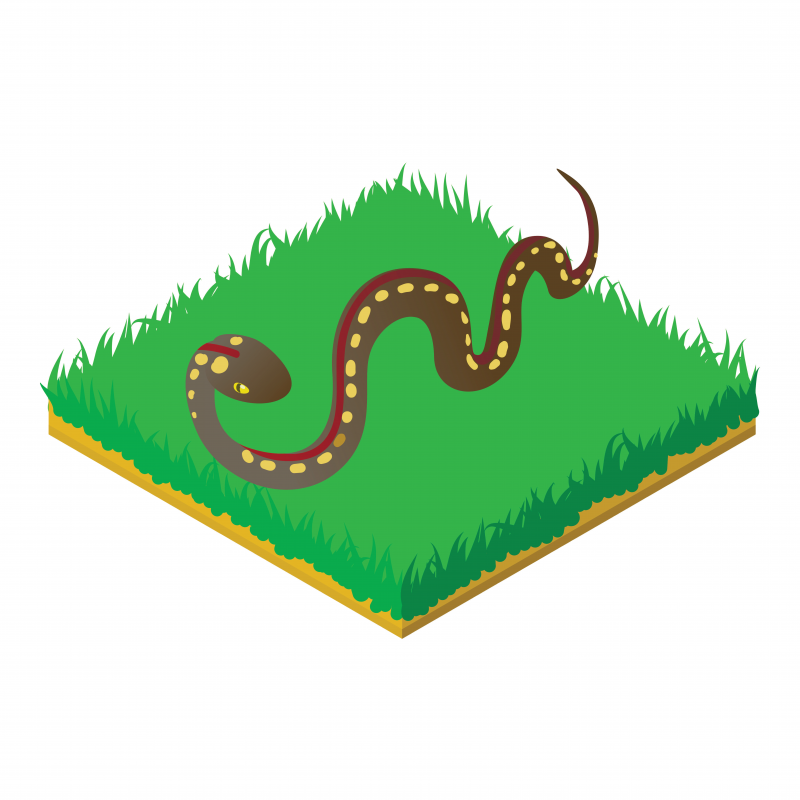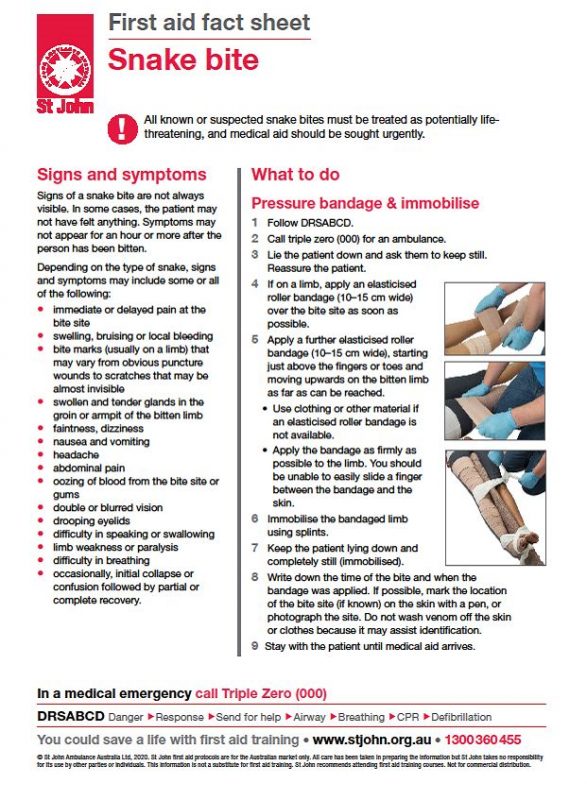Many of the world’s most venomous snakes live in Australia, but the chances of being bitten are small providing you use common sense and follow some basic rules.

Snakes are active in warm weather
We are more likely to encounter snakes during the warmer months of the year, from October to April when they are active. The most common snakes encountered are the:
- Eastern Brown Snake (Pseudonaja textilis)
- Red-bellied Black Snake (Pseudechis porphyriacus)
- Western Brown Snake (Pseudonaja mengdeni)
- Inland Taipan (Oxyuranus microlepidotus)
- Coastal Taipan (Oxyuranus scutellatus)
- Pygmy Copperhead (Austrelaps labialis)
- Mainland Tiger Snake (Notechis scutatus)
All these are venomous snakes but bites to humans are rare due to their timid nature.
They are more scared of you
Generally these snakes will try and avoid confrontation by moving away, hiding, or lying still until the threat has moved away. Most bites occur when a snake feels threatened or cornered so it will defend itself. Some bites occur because someone accidently treads on the snake, so look carefully when you are in their territory. As they generally will not attack unless provoked, never try to catch or kill them.
When you do see a snake, calmly and slowly move away from it. Tread softly as a snake feels your presence through the vibration of your footsteps on the ground rather than by hearing.
If you do get bitten…
In the unlikely situation you are bitten by a snake, always assume it was venomous. Remain as calm as possible and keep your body movements as slow as you can, sitting or lying down if possible, to slow the movement of the venom moving around your body. Immediately call an ambulance on the Australian emergency phone number 000 (triple zero) and apply a pressure bandage over the bite location.
See the St John First Aid Fact Sheet below for instructions.
For more information visit https://www.healthdirect.gov.au/snake-bites

